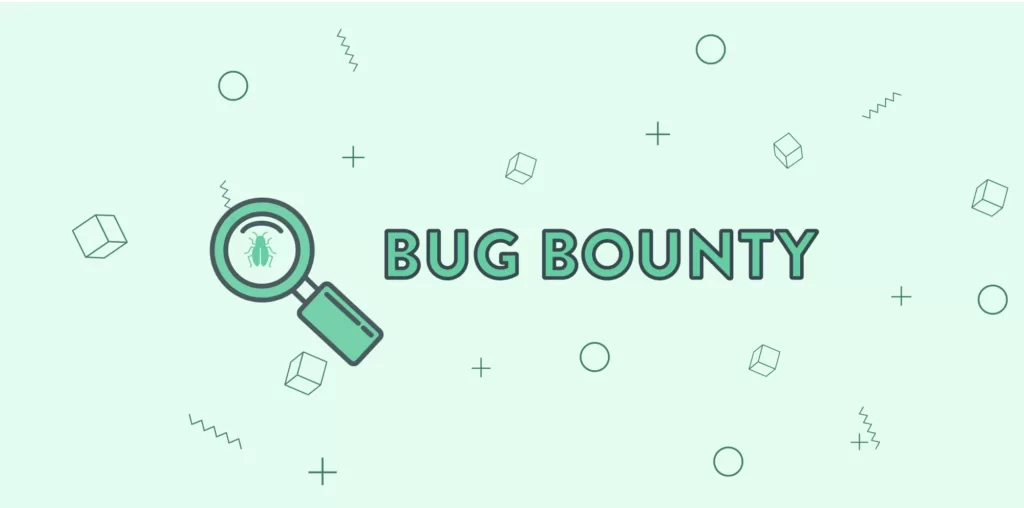Bug bounty programs have emerged as a valuable addition to organizations’ cybersecurity strategies, harnessing the power of the global security community to identify vulnerabilities and strengthen defenses. In this article, we will delve into the world of bug bounty programs, exploring their benefits, different types, and how organizations can implement and leverage these programs to enhance their security posture.
What is a Bug Bounty?
A bug bounty program is a cybersecurity initiative that encourages independent security researchers, known as bug bounty hunters, to discover and report vulnerabilities in an organization’s software, websites, or digital infrastructure. These programs incentivize ethical hacking by offering rewards, usually in the form of monetary compensation, for valid vulnerability reports.
clslearn offers you the best courses in the course of Offensive Cyber Security And CTF
How Do Bug Bounties Work?

Bug bounty programs operate on the principle of crowdsourced security testing. Organizations define the scope of the program, including the systems or applications eligible for testing, the types of vulnerabilities sought, and the rules of engagement. Bug bounty hunters then conduct security assessments, searching for vulnerabilities within the defined scope, and report their findings to the organization.
How Many Types of Bug Bounties are There?
Bug bounties can vary in terms of focus, scope, and eligibility. Some common types of bug bounties include:
Public Bug Bounties: These programs are open to the public, allowing anyone to participate and submit vulnerability reports. They often attract a large number of security researchers, increasing the chances of discovering diverse vulnerabilities.
Private Bug Bounties: Private bug bounties are invitation-only programs, targeting a select group of security researchers or a specific community. Organizations may opt for private bug bounties to ensure confidentiality or to engage with trusted security experts.
Platform Bug Bounties: Some bug bounty platforms act as intermediaries, connecting organizations with bug bounty hunters. These platforms provide a structured framework for running bug bounty programs, handling communication, payment, and vulnerability verification processes.
How Does a Bug Bounty Program Work?
A bug bounty program typically follows a series of steps:
Program Setup: The organization defines the program’s scope, rules, and rewards. This includes determining the eligible targets, types of vulnerabilities in scope, and the amount of compensation offered for valid reports.
Launch and Engagement: The program is launched, and bug bounty hunters are invited to participate. Organizations may provide documentation, guidelines, and resources to assist researchers in their testing efforts.
Vulnerability Discovery: Bug bounty hunters conduct security testing, employing various techniques to uncover vulnerabilities. They submit their findings to the organization, including detailed reports and proof-of-concepts.
Vulnerability Verification: The organization’s security team reviews the submitted vulnerabilities, validating their impact and severity. This process ensures that only legitimate vulnerabilities are rewarded.
Reward and Remediation: Once a vulnerability is confirmed, the organization provides compensation to the bug bounty hunter based on the program’s reward structure. The organization then proceeds with addressing the reported vulnerabilities, releasing patches or implementing fixes to mitigate the identified risks.
How Can I Set Up My Own Bug Bounty Program?

Organizations interested in implementing a bug bounty program can follow these steps:
Define Program Scope: Determine the systems, applications, or assets included in the program’s scope. Clearly outline the types of vulnerabilities in scope and any specific rules or limitations.
Establish Rules and Rewards: Define the rules of engagement, including guidelines for reporting vulnerabilities and the reward structure. Offer competitive rewards to incentivize researchers and attract their attention.
Communicate and Launch: Publicize the program across relevant platforms and communities. Engage with the bug bounty community, provide necessary resources, and establish channels for communication and vulnerability submissions.
Evaluate and Verify: Review and validate the submitted vulnerabilities, ensuring their legitimacy and potential impact. Establish a clear process for vulnerability verification and collaborate with researchers to gather additional details if needed.
Reward and Remediate: Provide rewards to bug bounty hunters for their valid findings based on the program’s reward structure. Address the reported vulnerabilities promptly, implementing necessary fixes or patches to enhance security.
Bug Bounty Program Examples:
Several organizations have successfully implemented bug bounty programs. Examples include companies like Google, Microsoft, and Facebook, which have long-standing bug bounty initiatives that have proven effective in identifying and addressing vulnerabilities in their products and services.
Get to know about : 10 TOP OFFENSIVE SECURITY TOOLS
How to Become a Bug Bounty Hunter?
Becoming a bug bounty hunter requires a combination of technical skills, persistence, and ethical conduct. Some steps to embark on this path include:
Gain Technical Expertise: Develop a solid understanding of web technologies, programming languages, and common security vulnerabilities. Acquire knowledge of tools and methodologies used in vulnerability assessment and penetration testing.
Learn Bug Bounty Best Practices: Familiarize yourself with bug bounty best practices, such as responsible disclosure, ethical hacking guidelines, and proper vulnerability reporting procedures. Stay updated with the latest industry trends and security research.
Participate in Bug Bounty Programs: Start by participating in public bug bounty programs to gain experience and showcase your skills. Engage withthe bug bounty community, join relevant forums, and collaborate with other researchers to learn from their experiences.
Continuous Learning and Improvement: Stay updated with new attack vectors, vulnerabilities, and security trends. Constantly enhance your technical skills and expand your knowledge in areas such as secure coding practices, network security, and application security.
Skills Required to Become a Bug Bounty Hunter:
Successful bug bounty hunters possess a range of skills, including:
Strong Understanding of Web Technologies: Proficiency in web technologies, such as HTML, CSS, JavaScript, and web frameworks, is essential for identifying vulnerabilities in web applications.
Knowledge of Security Concepts: Familiarity with common security concepts, including authentication, access control, encryption, and secure coding practices, is crucial for recognizing vulnerabilities and their potential impact.
Proficient in Multiple Programming Languages: A bug bounty hunter should be proficient in programming languages commonly used in web development, such as Python, PHP, Java, or Ruby. This knowledge enables them to analyze source code and identify vulnerabilities.
Familiarity with Security Tools: Bug bounty hunters should be comfortable using security tools like Burp Suite, OWASP ZAP, or Nmap to assist in vulnerability discovery and assessment.
Persistence and Problem-Solving Skills: Bug bounty hunting requires persistence, patience, and the ability to think critically. A tenacious mindset and strong problem-solving skills are essential for identifying complex vulnerabilities.
Benefits of Bug Bounty Programs:

Bug bounty programs offer several benefits to organizations, including:
Enhanced Security: Bug bounty programs provide an additional layer of security testing by leveraging the collective intelligence of security researchers. This proactive approach helps identify vulnerabilities before malicious actors can exploit them.
Cost-Effective: Bug bounty programs can be a cost-effective alternative to traditional security assessments. Organizations pay only for valid vulnerability reports, rather than investing in full-time security personnel or outsourcing expensive penetration tests.
Diverse Skillsets: Bug bounty programs attract a wide range of security researchers with diverse skillsets and perspectives. This diverse pool of talent increases the chances of uncovering unique vulnerabilities that might be missed through traditional security testing methods.
Reputation and Trust: By demonstrating a commitment to security through bug bounty programs, organizations can enhance their reputation and build trust with their user base. This can have a positive impact on customer loyalty and brand image.
Continuous Improvement: Bug bounty programs provide organizations with ongoing feedback on their security posture. By addressing reported vulnerabilities promptly, organizations can continuously improve their products and services.
Conclusion:
Bug bounty programs have become an integral part of organizations’ cybersecurity strategies, offering numerous benefits, including improved security, cost-effectiveness, and access to diverse skillsets. By understanding the types of bug bounties available, organizations can design effective programs and engage with the bug bounty community to strengthen their defenses. Simultaneously, aspiring bug bounty hunters can enhance their skills and contribute to securing digital ecosystems while reaping the rewards of their efforts.
Remember, bug bounty programs should be implemented alongside other security measures to ensure comprehensive protection against cyber threats. Embracing bug bounty programs can empower organizations to stay one step ahead of potential attackers and foster a culture of security and collaboration within the cybersecurity community.
























